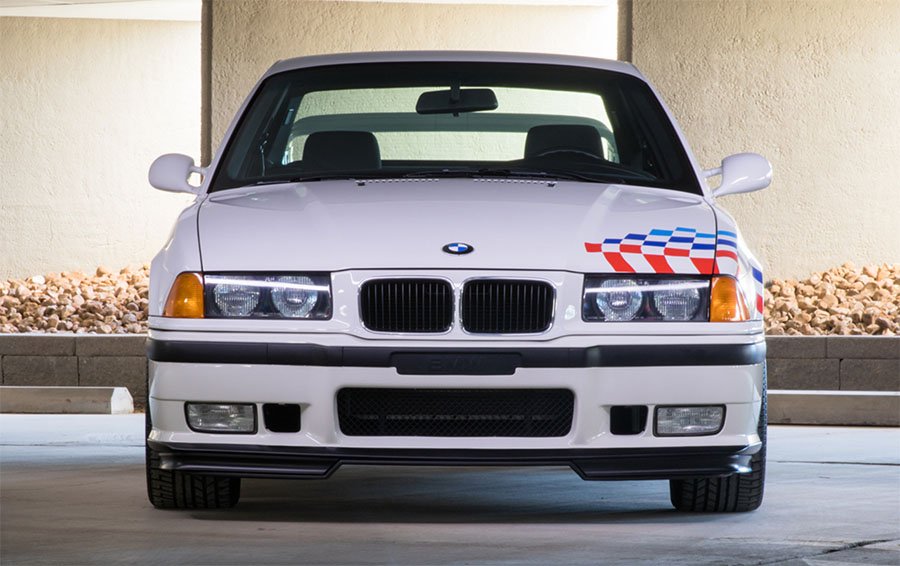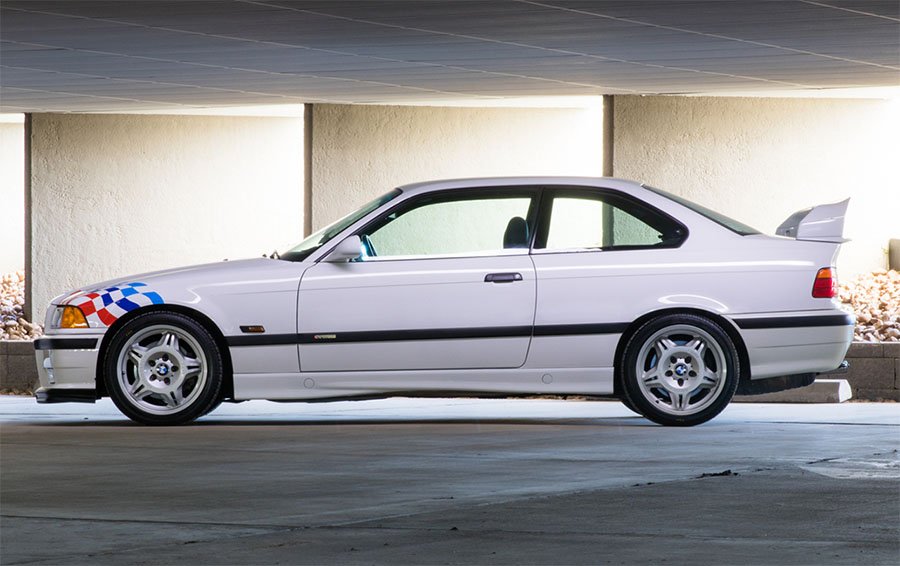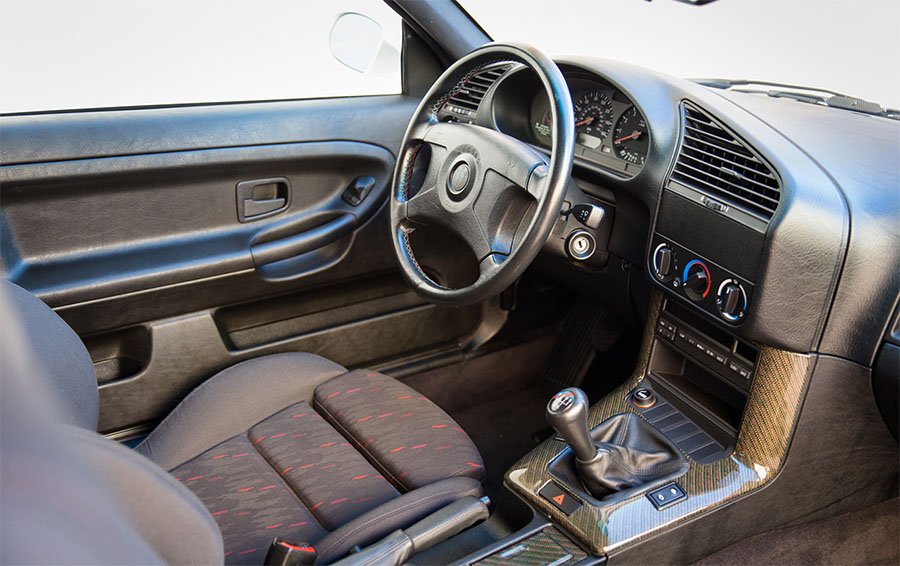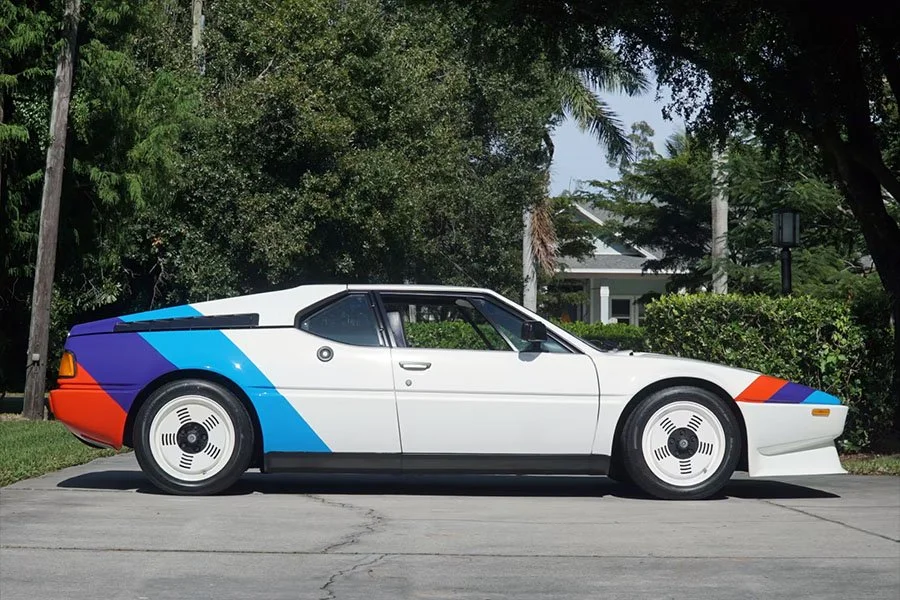Guide: BMW E36 M3 3.0 Lightweight - a Historical & Technical Appraisal
/BACKGROUND
Because the E36 M3’s Type S50 B30 engine was unable to meet US emissions standards, BMW did not plan to offer their flagship 3-series in North America.
However, that decision was ultimately reversed and 15 months after the M3 Coupe had been launched (at the Paris Motor Show in October 1992), a watered down version for the US market made its debut at the Los Angeles Motor Show in January 1994.
At the heart of this latest variant was a special Type S50 B30 USA engine with a cylinder head that more closely resembled the less exotic M50 unit from the standard E36.
Peak output was 240bhp at 6000rpm compared to 286bhp at 7000rpm for the Euro version.
The torque rating was 225lb-ft at 4250rpm whereas the full fat motor produced 236lb-ft at 3600rpm.
As standard, these US cars came with air conditioning, leather trim, a ten-speaker stereo, driver and passenger airbags, a third brake light, metallic paint and an economy gauge instead of the regular M3’s oil temperature read out.
In 1993, BMW Motorsport successfully raced their wide-arched and heavily spoilered M3 GTR in the German ADAC GT Championship. Johnny Cecotto won six of the eight rounds on his way to that year’s title.
Aside from a one-off appearance in the Mil Milhas Brasilieras at the beginning of the year (where Cecotto, Nelson Piquet and Ingo Hoffman came fourth), the GTR did not race in 1994.
However, for 1995, BMW decided to wheel out the GTR for an attack on the IMSA GTS-2 class in North America. Tom Milner’s Prototype Technology Group based in Virginia were contracted to manage the campaign.
To homologate some of the M3 GTR’s aerodynamic, chassis and engine parts for IMSA, BMW Motorsport produced a limited edition road car, the E36 M3 GT, which was supplied exclusively in left-hand drive to the European market.
Although the M3 GTR achieved a few good results during its partial 1995 IMSA campaign (most notably a couple of GTS-2 class podium finishes), the BMWs (which ran in narrow-bodied form during 1995) were generally outclassed by Porsche’s 911 Carrera RSR and the Mazda RX-7. However the subsequent wide-arched GTR then went on to secure all the available championships between 1996 and 1998.
To capitalise on the high profile IMSA campaign, BMW decided to offer their American customers a stripped-out track-focused machine: the M3 Lightweight. It was based on the standard US-spec. M3 Coupe and BMW North America originally stated that just 85 examples would be produced.
INTERIOR
The most radical alterations concerned the extremely basic cockpit.
Although electric windows were retained, the Lightweight came without normally standard equipment such as air-conditioning, an audio system and an alarm.
Sound insulation was greatly reduced and basic Anthracite carpet from the entry level E36 Coupe was used. Instead of the high-backed Vader seats usually fitted to M3 Coupes, the Lightweights came with manually-adjustable sports seats from the regular E36. Upholstery was Anthracite Hurricane fabric with red and grey highlights.
These cars were not available with a sunroof and a blanking plate was fitted in the absence of a stereo.
New equipment included carbonfibre inserts applied to the centre console and glove compartment. BMW Motorsport International-branded sill plates and a matching glovebox plaque were also fitted.
A four-spoke airbag steering wheel was standard.
In the trunk, the spare wheel, tool kit and jack all got the chop.
Red instrument needles were retained along with a BMW Motorsport-gear lever and instrument panel.
BODYWORK
To increase downforce, each M3 Lightweight came with an adjustable satin black front splitter (from the GT) and the normally optional rear spoiler (complete with integrated third brake light).
Like the GT, BMW Motorsport International emblems were added to the exterior door mouldings. Similarly, the doors were fabricated from aluminium instead of steel.
Only one colour scheme was available: Alpine White with Motorsport graphics emblazoned across the left-hand front and right-side rear corners.
CHASSIS
Instead of the standard US-spec. spring and damper rates (which were slightly softer than normal), the Lightweight adopted settings from the regular M3 Coupe sold in Europe.
Lightweights also came with BMW’s normally optional forged Double M Spoke alloy wheels. These measured 7.5 x 17-inches at the front and were the widest available 8.5 x 17-inches at the rear.
Like every M3, each Lightweight started life as a standard E36 Coupe bodyshell.
Suspension was via MacPherson struts up front and a multi-link ‘Z-axle’ at the rear.
M3-specific upgrades compared to the rest of the E36 range included progressive-rate springs and stiffer dampers, ride height dropped by 30mm, reinforced spring mounting points, modified track arms, reinforced front stub axles, thicker anti-roll bars and rear wheel bearings from the 850i.
The ventilated brake discs measured 315mm at the front and 313mm at the rear. M3s came with re-tuned ABS and a larger-than-normal brake master cylinder.
A standard 62-litre E36 fuel tank was located underneath the rear seats.
ENGINE / TRANSMISSION
In the engine bay was a standard albeit hand-selected version of the S50 B30 USA engine: a dual overhead camshaft 24-valve straight six with a cast-iron block and light alloy head.
Compared to the regular M3, these engines had a less complex cylinder head and the two-stage VANOS timing system from the M50 motor. They didn’t come with individual throttle bodies for each cylinder and the compression ratio was 10.5:1 as opposed to 10.8:1.
Displacement was 2990cc thanks to a bore and stroke of 86mm and 85.5mm respectively.
BMW fitted Bosch Motronic M3.3 engine management, a dual mass flywheel and a free-flow intake and exhaust system with dual catalysts.
Peak output was the aforementioned 240bhp at 6000rpm and 225lb-ft at 4250rpm.
Transmission was through a close-ratio five-speed ZF gearbox, a single-plate Sachs clutch and limited-slip differential.
To improve acceleration, the Lightweight came with a shorter final drive ratio (3.23:1 as opposed to 3.15:1).
RACING KIT
Supplied in the trunk of each Lightweight was a kit of special racing parts that were not type approved for street use and, if fitted, voided the manufacturer warranty.
The kit included a baffled oil pan with dual pick-up (to ensure constant oil flow in hard cornering), a front strut tower brace, a lower cross brace and an adjustable rear spoiler.
OPTIONS
Customers could have their car further enhanced with fully adjustable suspension, cross drilled brake discs and adjustable camber plates.
WEIGHT / PERFORMANCE
As a result of the extensive weight-saving measures, the Lightweight tipped the scales at 1338kg. The standard Euro-spec. M3 Coupe weighed 1460kg (122kg more).
Top speed was electronically limited to 155mph.
Despite using an engine with 46bhp less than the full fat M3, 0-62mph was only three tenths-of-a-second slower (5.8 seconds compared to 5.5 seconds).
PRODUCTION
BMW assembled the first 10 pre-production Lightweights in January and February of 1995. An eleventh prototype then followed in April.
Although a production run of 85 units had originally been promised, 115 customer cars were built between August and October of 1995 which took total production to 126 units. Each vehicle was dispatched to PTG Racing in Virginia for final preparation prior to sale.
Text copyright: Supercar Nostalgia
Photo copyright: Gooding & Company - https://www.goodingco.com/


































